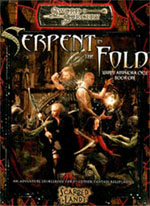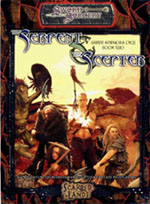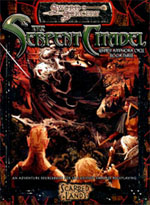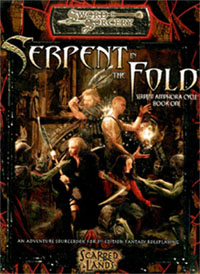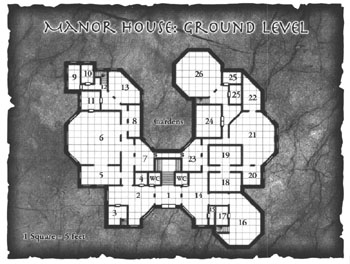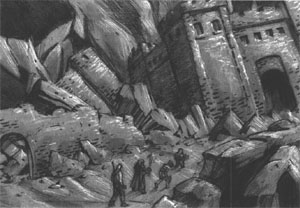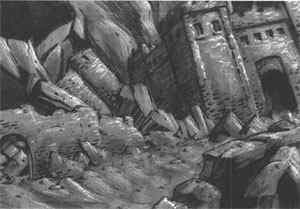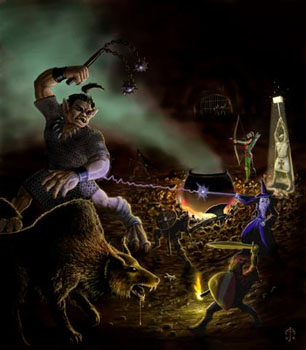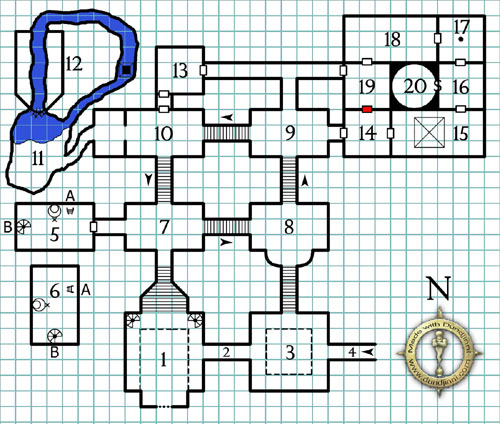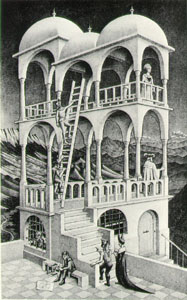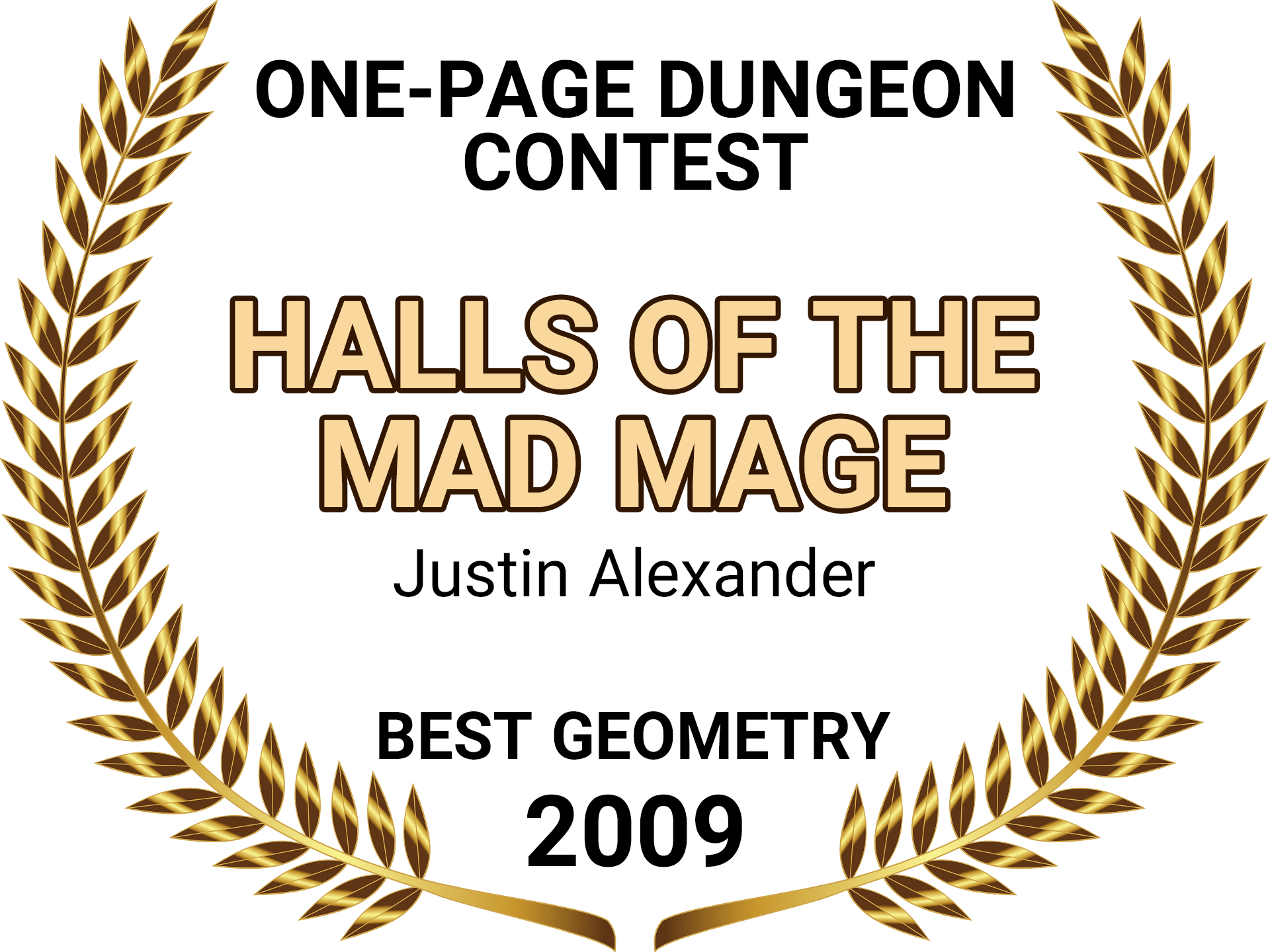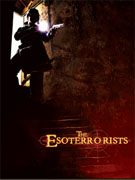 I’ve recently been reviewing The Esoterrorists by Robin D. Laws with an eye towards how the core design ethos of the system — that the PCs always find every clue that can be found (as discussed in more length as part of my essay on the Three Clue Rule) — could be adapted to more generic purposes. (And quickly coming to the conclusion that is, in fact, so completely antithetical to the reasons that I play roleplaying games that it won’t work for me in any form.)
I’ve recently been reviewing The Esoterrorists by Robin D. Laws with an eye towards how the core design ethos of the system — that the PCs always find every clue that can be found (as discussed in more length as part of my essay on the Three Clue Rule) — could be adapted to more generic purposes. (And quickly coming to the conclusion that is, in fact, so completely antithetical to the reasons that I play roleplaying games that it won’t work for me in any form.)
HARD AND SOFT LIMITS
But the game has prompted me to give some fresh thought to hard limits in system design, and the effect they have on scenario design for and the utility of a roleplaying game.
For example, let’s consider hit points: Imagine a hypothetical system in which the PCs have 20 hit points each. If each PC loses an average of 4 hit points each time they get involved in combat, then after four combat encounters the system is essentially mandating that the PCs stop fighting things (because the fifth encounter will kill them).
For simplicity’s sake, let’s assume that in this hypothetical system there’s no way for a PC to heal or restore their hit points except to rest for 1 week without stressful activity. That becomes a hard limit for scenario design: If you design a scenario that requires the PCs to fight more than four times in a single week, then your scenario is most likely going to end in failure (as the injured PCs either retreat or die).
This is, basically, how D&D 4th Edition is designed. The math is more complicated due to healing and variable encounter difficulty, but when the party’s healing surges run out (or, more accurately, when the healing surges for a single PC run out), the adventuring for the day is over. It has a hard system limit on how many combat encounters you can have per day, and you cannot design encounters with more combat encounters (or more difficult combat encounters) without house ruling the system.
By contrast, previous editions of D&D used hit points as a soft limit because there’s no limit placed on how much magical healing a single character can receive in a day. Of course, there are practical limits to the amount of healing any given adventuring party will have available to it in a single day, so you can’t simply ignore the issue of depleting the party’s hit points across multiple encounters. But it’s a soft limit precisely because there are ways (within the rules of the system itself) for overcoming that limitation.
For example, imagine that you wanted to design a scenario in which the PCs were in control of a fortress and needed to defend it from an army of the undead. In 4th Edition the scope of this scenario is dictated by the system: You can’t have more than X encounters of Y strength because the PCs will run out of healing surges. In 3rd Edition, on the other hand, you can make the siege last for any number of encounters, as long as you’re willing to provide the PCs with the necessary resources (like wands of cure light wounds, for example).
The reason I bring this up is that in most traditional roleplaying games there aren’t actually many hard limits to be found. I’ve found them to be quite a bit more prevalent in indie games, but in most cases they’re also fairly obvious in such games.
For example, 3:16 Carnage Amongst the Stars features a core mechanic for each mission in which the GM is given a budget of threat tokens equal to 5 x the number of PCs. The GM constructs encounters by spending threat tokens, and when he runs out of tokens the mission is over. This limit isn’t hidden in any way. Knowing it is recognized as being an integral part of running and playing the game. (Which, when you get right down to it, is true for all hard system limits. It’s just that 3:16 acknowledges it.)
HARD LIMITS IN GUMSHOE
The GUMSHOE system used in The Esoterrorists, on the other hand, looks like a traditional RPG… but its design is riddled with hidden hard limits.
Allow me to explain the two core mechanics of the game:
(1) For any investigative task, the PC uses the appropriate skill and automatically succeeds at finding any of the appropriate basic clues in the scene. In addition, a PC’s ranking in an investigative skill gives them a pool of points which they can spend to buy additional clues using that investigative skill that are non-essential to the adventure, but interesting in one way or another.
(2) For any non-investigative task, a difficulty number from 2 to 8 is secretly assigned and 1d6 is rolled. If the roll is higher than the difficulty number, the PC succeeds. A PC’s ranking in non-investigative skills also give them a pool of points which they can spend on checks using that skill to give them a +1 bonus to their die roll.
Pools for physical skills are replenished every 24 hours. Pools for non-physical skills are only replenished when a scenario ends.
And there’s your hard limit. Or, rather, your many hard limits: Each and every skill is turned into a 4E-style hard limit. For investigative skills this is relatively muted by the “mandatory success” mechanics of the system, but this same mandatory success results in a very flat playing experience if it’s not being periodically spiced by pool buys.
In practice, these hard limits severely restrict the length of an Esoterrorist scenario.
These limits, of course, aren’t entirely without their benefits. For example, once you recognize the hard limit, you’ll also realize that the system is silently mandating a diversity in the design of a scenario (so that you don’t rapidly tap out a single pool) — which, on the balance, is likely to be a positive more often than a negative.
But the negatives seem quite significant to me.
For example, in designing the investigative portions of a scenario you have two ways of dealing with the GUMSHOE hard limit:
(1) You can budget the number of “bonus clues” available in the scenario to make sure that the PCs will always have the points required to buy them. This avoids the problem of running out of points early in the game and then being forced to only engage the scenario at the most passive level available, but it raises the question of why the pools exist at all: It’s like sending you to a typical garage sale and then enforing a strict budget of spending no more than $1,000,000. Theoretically that’s meaningful, but in practice you’ve got all the money you need to buy everything on sale so it’s not a limitation at all.
(2) On the other hand, you can include more “bonus clues” over the course of the scenario than the PCs can afford. This means that the PCs will have to budget their points and only spend them selectively.
But here’s the problem: The players don’t know which of these approaches is true in any given scenario. (Particularly since most GMs aren’t going to read this essay and, therefore, aren’t going to make a deliberate decision in either direction. In practice, it’ll be a crapshoot from one scenario to the next which of these true. And which is true for which pool of points.)
And, furthermore, the design of the system is such that you often don’t know what you’re buying.
So either I’m giving you a million bucks and saying “buy everything at the garage sale”; or I’m giving you $5 and telling you to buy a random grab bag of stuff. It’s a feast or a famine and you don’t know which it is until it’s too late.
The problem becomes more severe for non-investigative tasks. Here the players need to spend the pool points in an effort to boost a random die roll above a target number that they don’t know. And they have to make that decision without any real knowledge of how many more die rolls of the same type they might be called upon to make.
So you’re bidding in a (frequently life-or-death) silent auction in what may (or may not) be a long series of silent auctions, the exact number of which you have no way of guessing.
CONCLUDING THOUGHTS
Of course, the argument can be made that I’m being relatively harsh on a game system which was probably designed to provide nothing more than a semi-useful scaffolding on which to hang some group improv.
But I belong to that school of thought that believes that system matters. And I don’t come to that belief merely from a background in game design. It’s also derived from my experience as an improv actor: The improv structures you use have an impact on the creativity that happens. Being aware of the strengths and weaknesses of an improv structure is the first step towards (a) choosing the right improv structure and (b) mastering the improv structure you choose.
In any case, hard limits are something to watch out for in a game system. They’re the points beyond which the game either Fails Completely or, at best, Stops Being Fun. That needs to be taken into account: Generally to be steered clear of, but sometimes to be taken advantage of.

